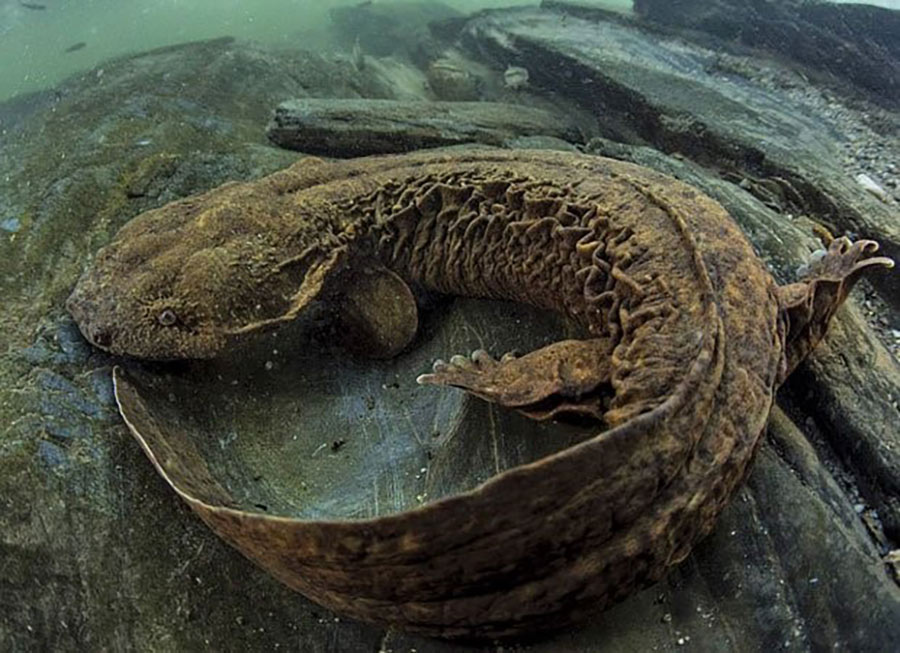This week, we’ll be examining endangered species in Pennsylvania. While the term “endangered” often evokes imagery of flashier, more publicized animals like the giant panda or Siberian tigers, there are many animals in equal danger of extinction within our own state. Currently, the Pennsylvania Game Commission lists 23 species as endangered and 6 species as threatened, though this only encompasses mammals and birds. Overall, people frequently focus more on mammals; however, there are an array of reptiles, fish, and amphibians that are also struggling due to factors such as habitat loss and pollution that are not accounted for by the Game Commission’s list.

Currently, one of the most endangered species in PA is the Eastern Massasauga Rattlesnake. It’s worth noting that this is primarily from a Pennsylvanian perspective; while the snakes are ranked as least concern globally for conservation status, their populations have been particularly impacted here. Currently, there are only four populations of the snakes in two counties, a substantially lower number than in the past.
Though the snake is venomous, it rarely attacks people and generally tends to be a meek animal that would prefer to camouflage itself and stay hidden. However, people have hindered them from doing so through urbanization and mining efforts.
These snakes are of environmental importance, serving vital roles in their ecosystems by controlling rodent populations, and their venom has been adapted for medical purposes. Furthermore, they’re known as an “umbrella species;” in other words, from the position of a conservationist, the massasauga is a representative for its ecosystem. Any efforts to help protect it also lead to benefits for other species in its environment. Thus far, professionals have made efforts to restore habitats for the snake, thereby increasing the area where they can thrive.

Another less-than-glamorous species in dire need of assistance is the freshwater mussel. These species are vital for their filtering capabilities, which help to remove some pollution from rivers. They are also important parts of their respective ecosystems as potential food sources for other species. However, human behavior, such as creation of dams, destruction of habitats, and an extreme excess of pollution (which builds up within the mollusks) have threatened these indispensable creatures.

We’ve only touched the tip of the iceberg with respect to Pennsylvania’s endangered species. There are many other creatures, such as native bat species, the eastern hellbender (a species of salamander and our state amphibian), the northern flying squirrel, and a range of bird species, that are also at risk.
How can you help? As I’ve emphasized in my prior posts, one of the major first steps to making an impact is through education. Make an effort to learn more about the different endangered species in your area, and try to inform your friends and family on them as well. Other tips are fairly self-explanatory: don’t litter, buy sustainable products, and avoid using potentially toxic pesticides in your garden. If you’d like to take your efforts a step further, consider organizing a local cleanup for people in your community; in doing so, you can encourage others to get involved, and you can ultimately help to better conditions for local wildlife.
The future will likely only bring more problems for native species, with global warming and further human development. Thus, it is vital that we are proactive and take steps now to protect Pennsylvania’s biodiversity.
.
References
“15 Ways to Help Protect Endangered Species.” Endangered Species Coalition, www.endangered.org/15-ways-to-help-protect-endangered-species/.Accessed 25 Mar. 2022.
“Freshwater Mussels.” Center for Biological Diversity, he Center for Biological Diversity, www.biologicaldiversity.org/campaigns/freshwater_mussels/. Accessed 25 Mar. 2022.
“Species at Risk.” Western Pennsylvania Conservancy, waterlandlife.org/wildlife-pnhp/species-at-risk-in-pennsylvania/. Accessed 25 Mar. 2022.

This was very informative! I had no idea that there were 23 endangered species in PA and 6 that are threatened. When I hear endangered, I usually think of the more publicized animals you mentioned. This was very enlightening.
Hi Jasmine. I have learned over the years that there are a ton of different types of endangered species, most of which a lot of people – including myself – have never even heard of before! Like you mentioned, I only know of the big name “zoo” animals in addition to bees as well, I guess. To be honest, I have never even heard of a Massasauga before. My computer even underlined it in red, so it does not seem to know what it is, either. Regardless, in terms of spreading awareness for endangered species – this is a job well done. I am sure that there are definitely more endangered species out there, and that unfortunately, there will continue to be an increasing number of endangered species, too. The issue is that in general, people are less inclined to care if they do not immediately and/or explicitly see the effects and impacts that they are creating.
This was really interesting! I know that snakes are essential to the environment, but that does not make them any less scary. I did not know so I many Pennsylvania animals were at risk. Having friends from other states and from traveling, I am always in awe of the beautiful scenery and biodiversity we have in our region. The gorgeous sceneries filled with animals and adventures is niche to Pennsylvania, especially around State College area. This was really informative, good job!